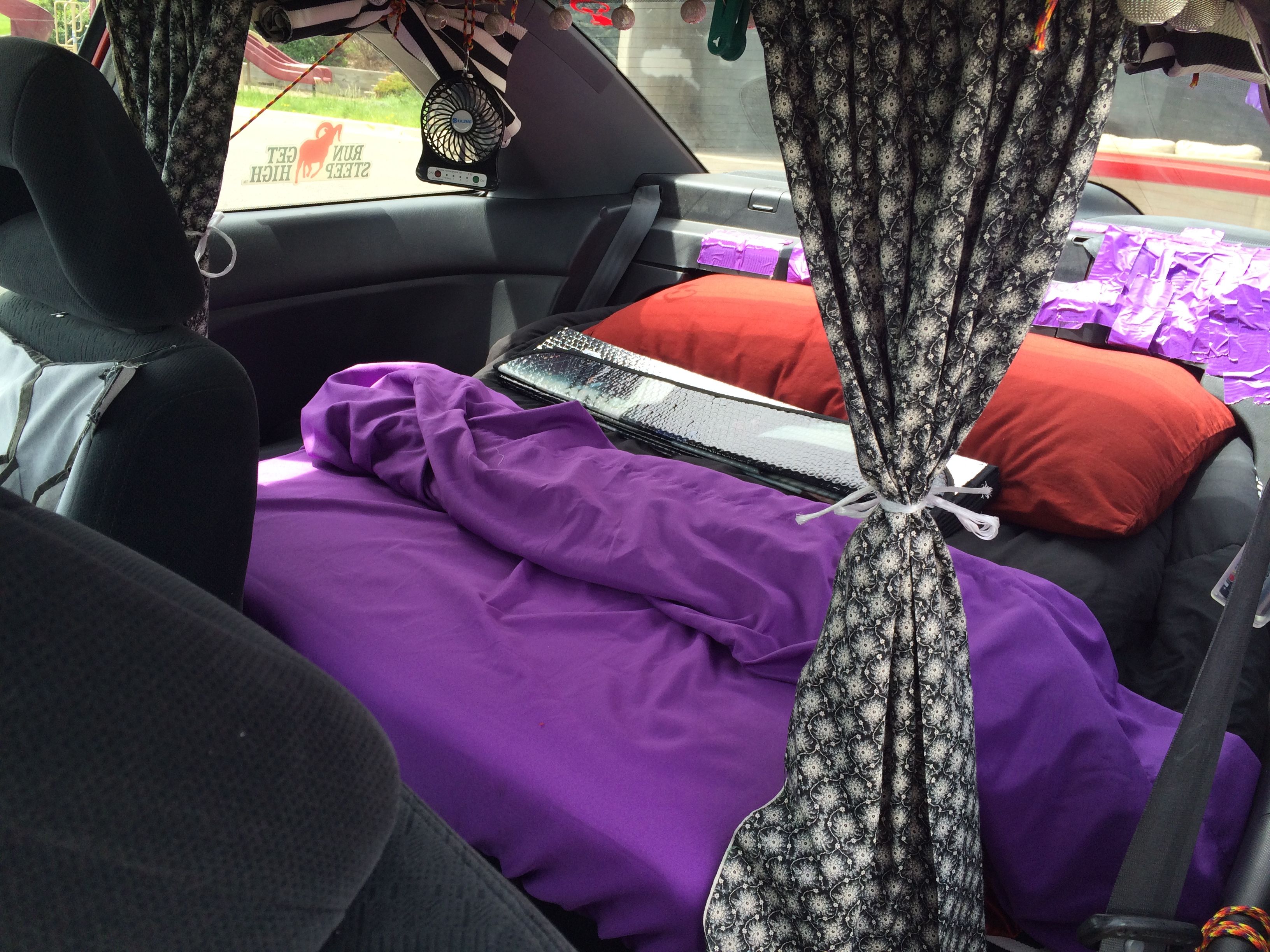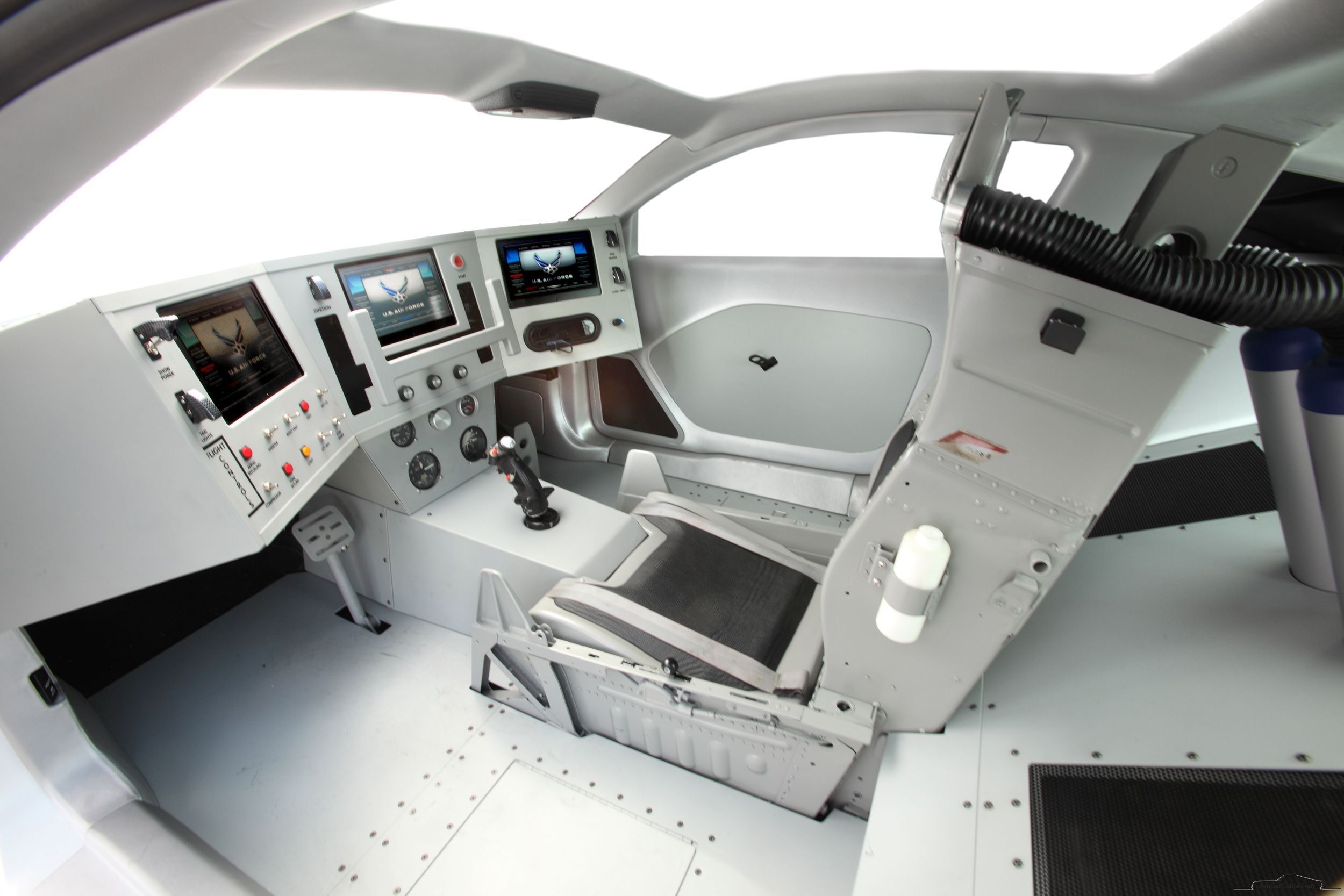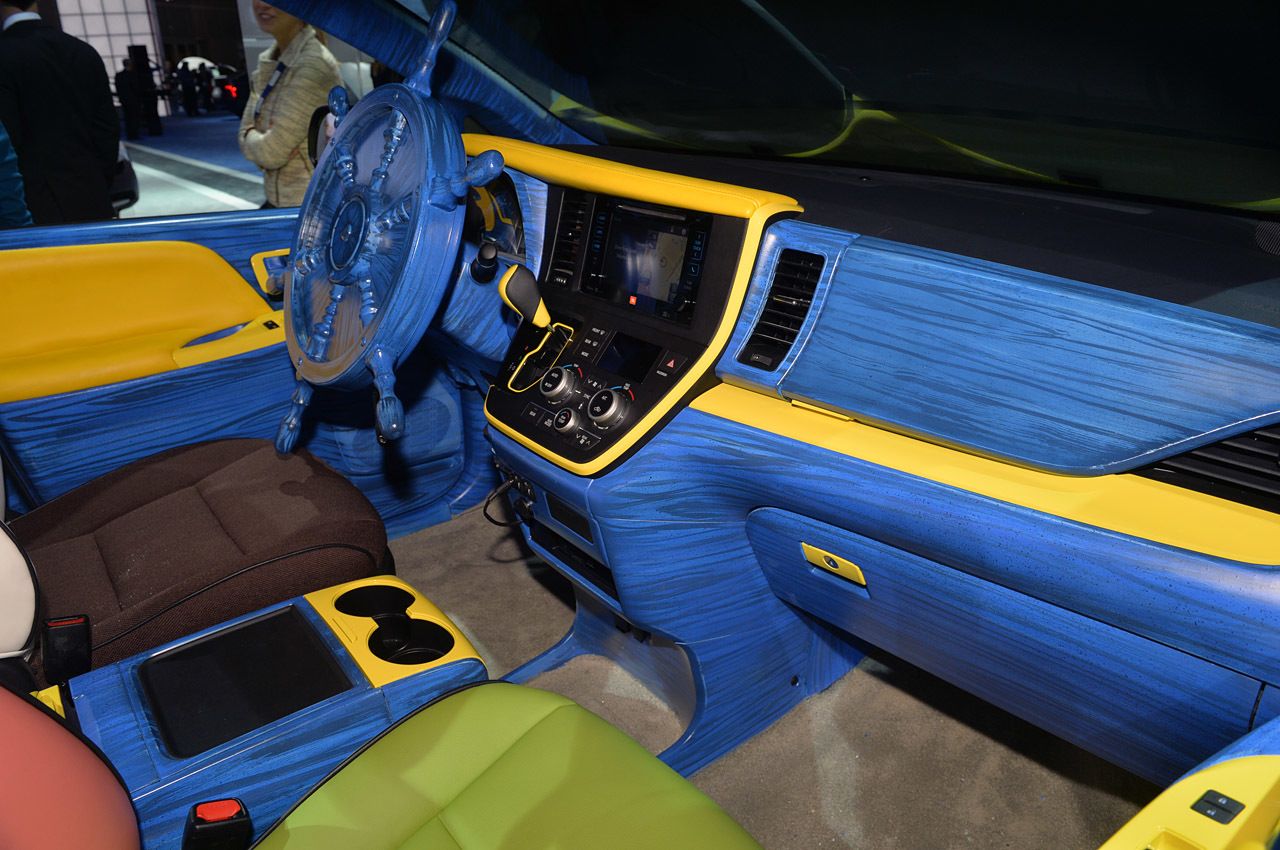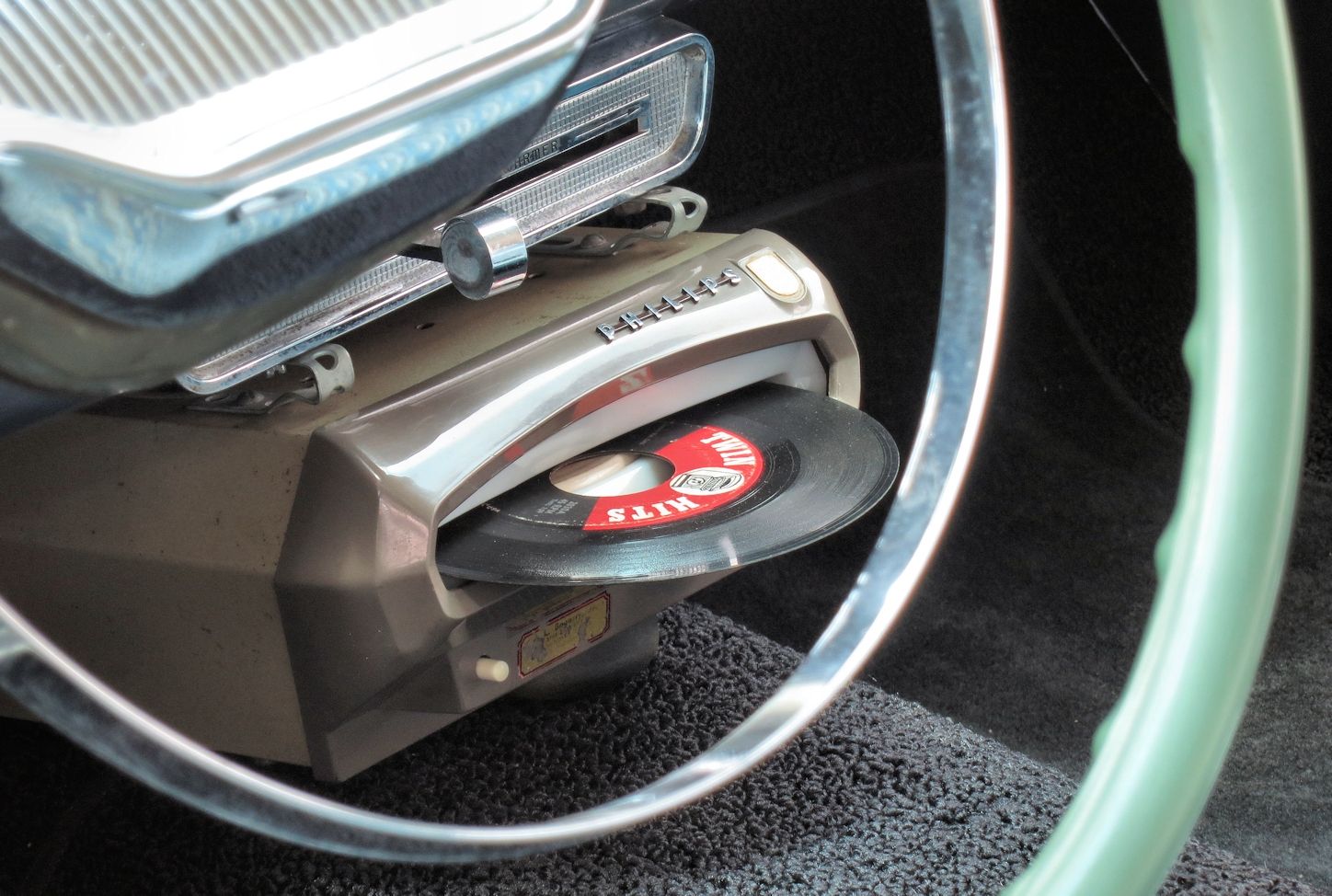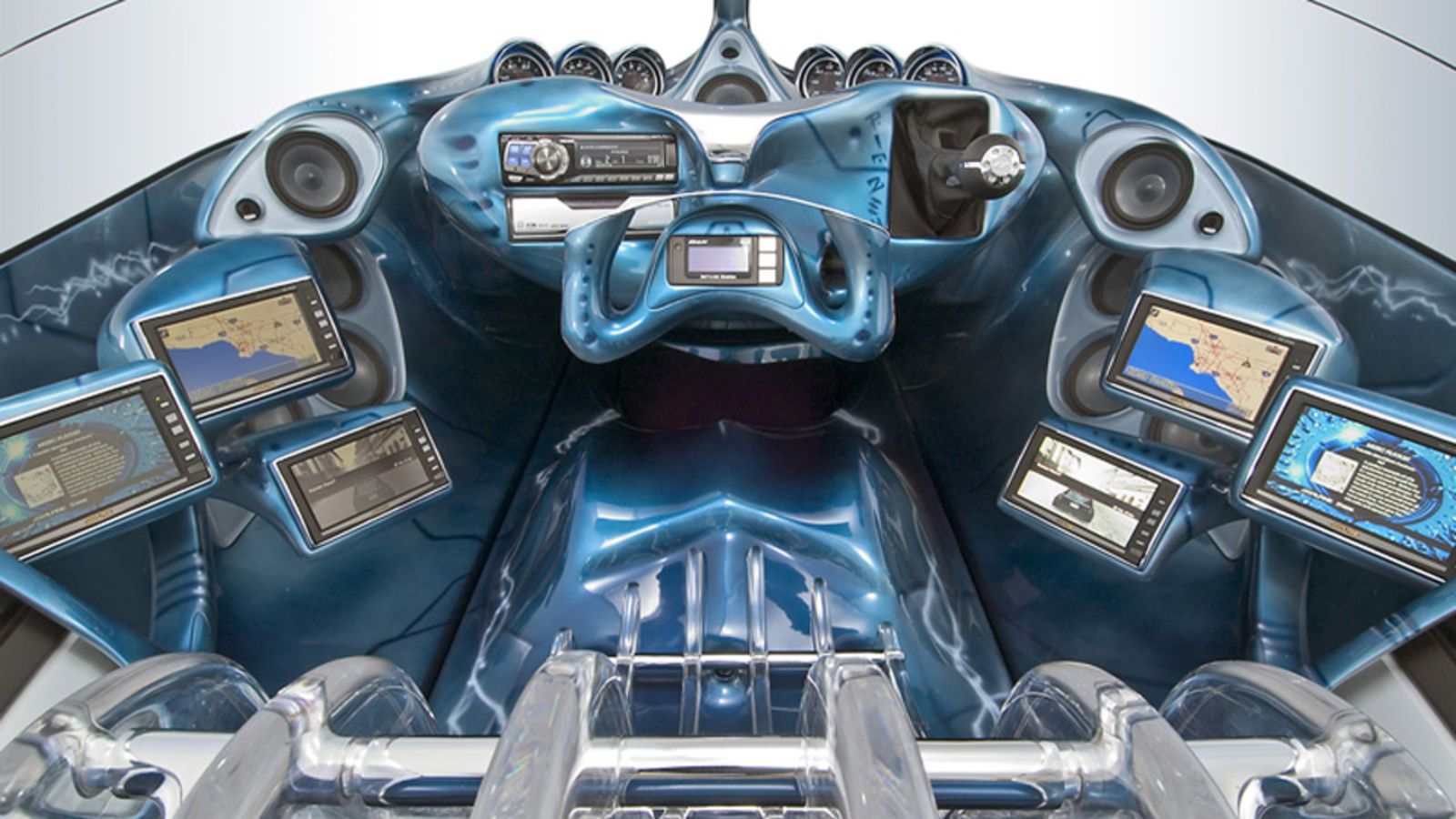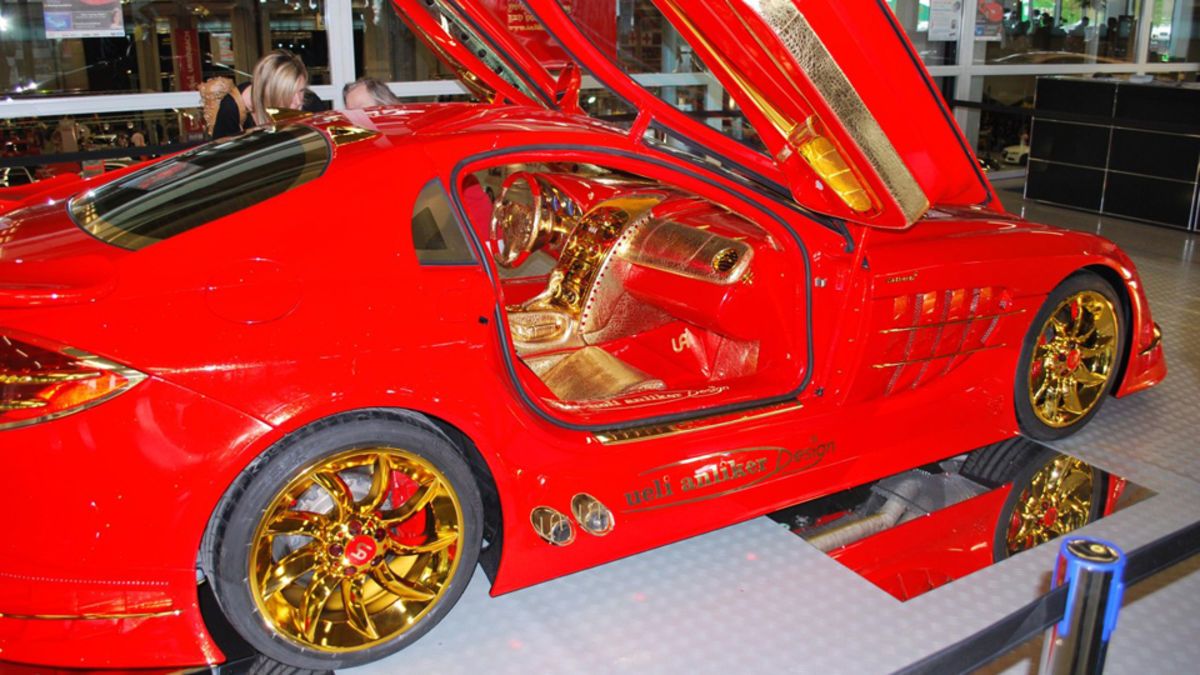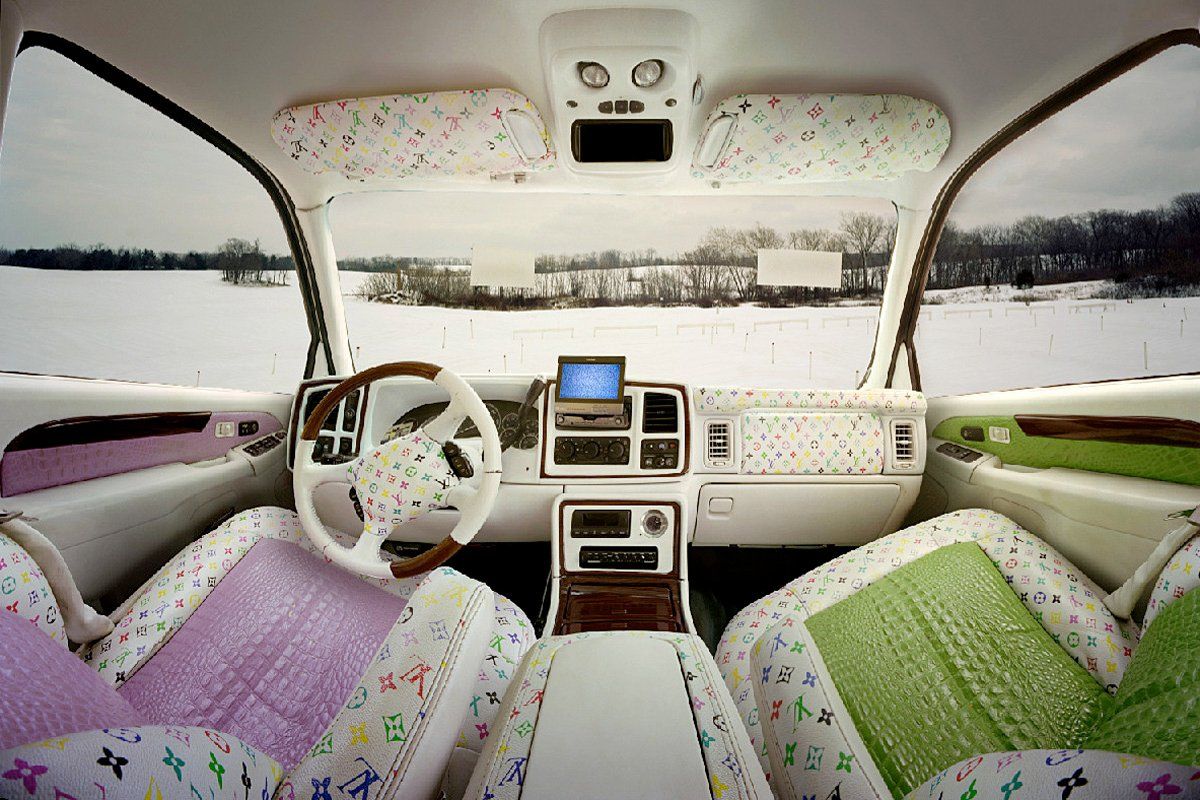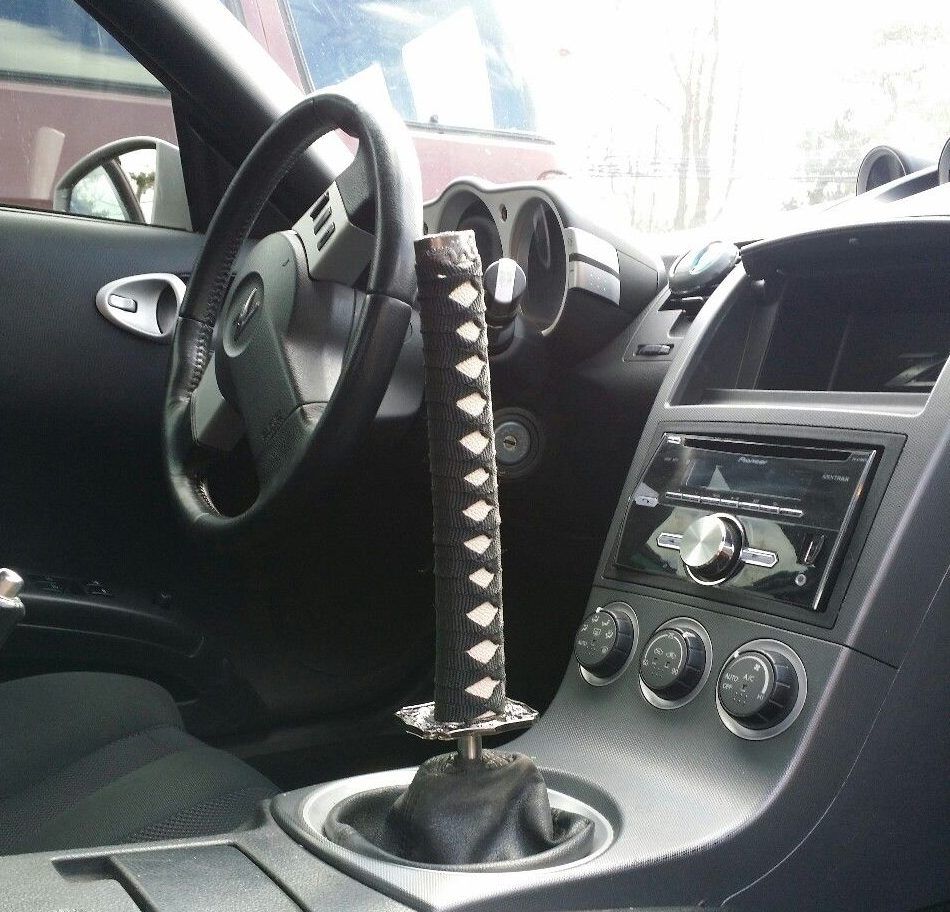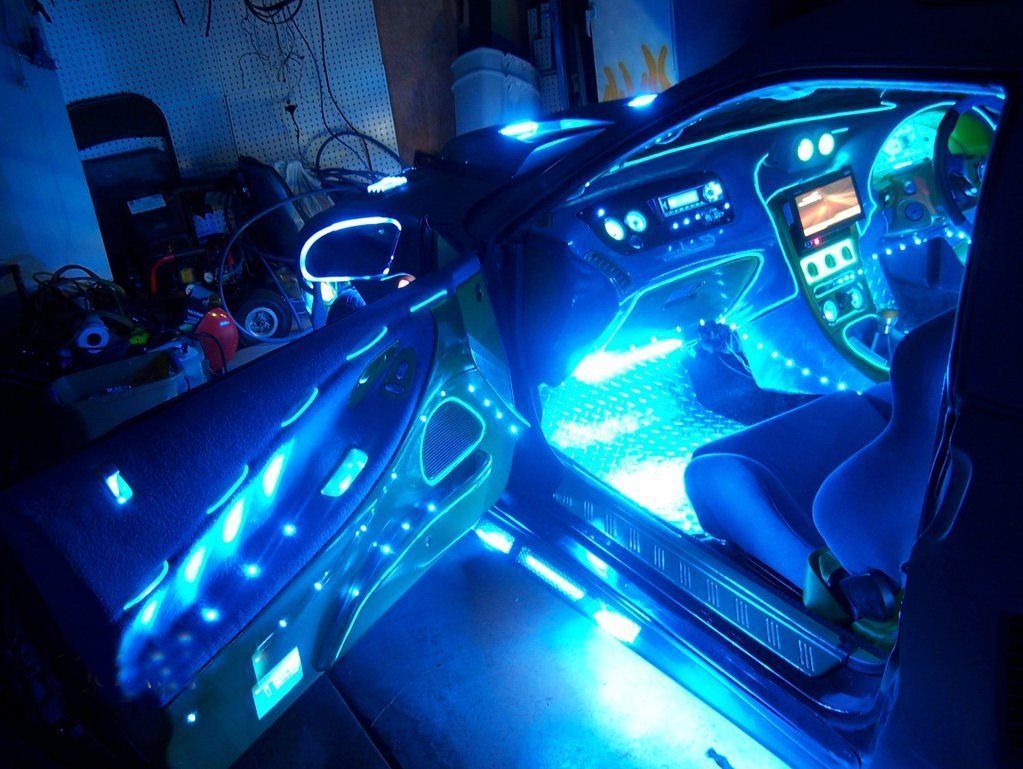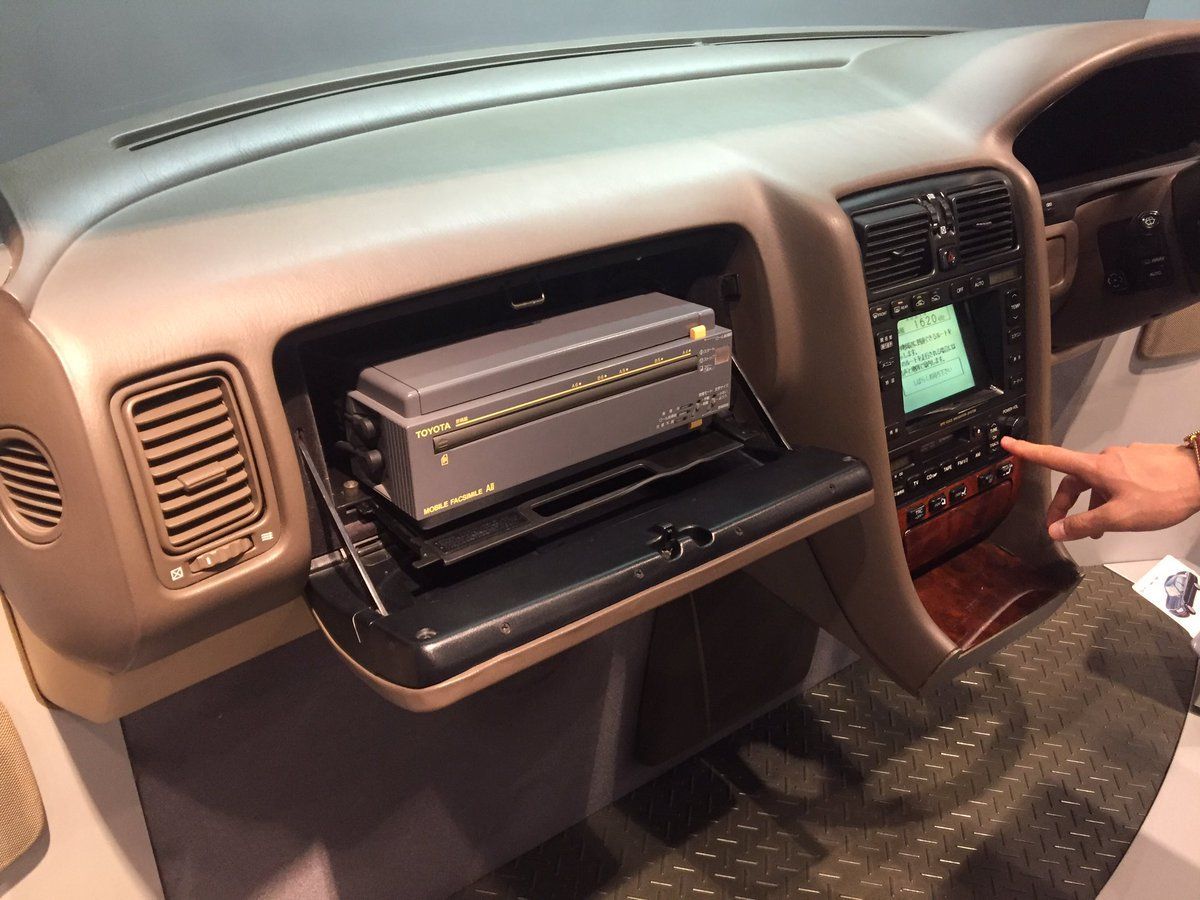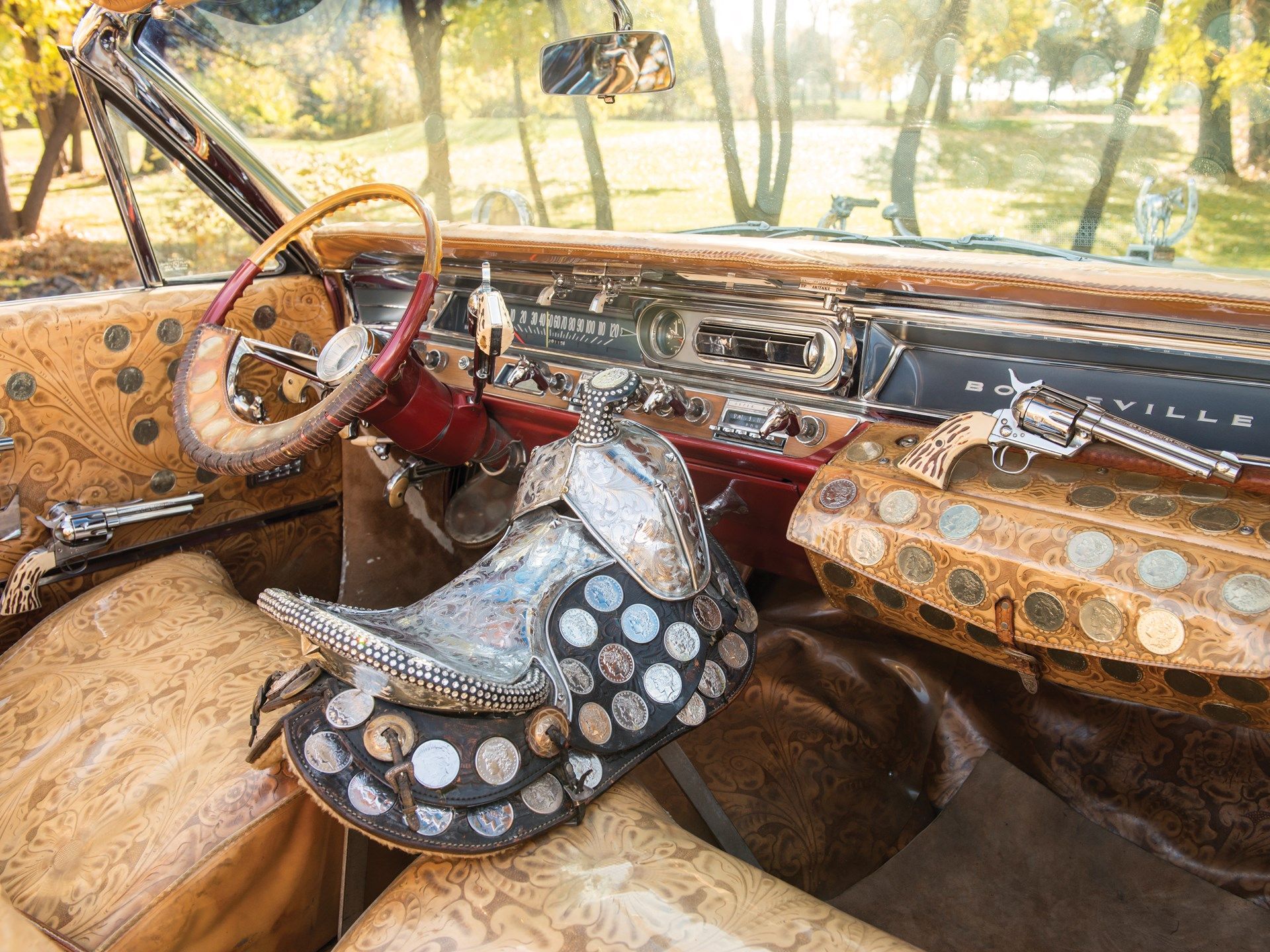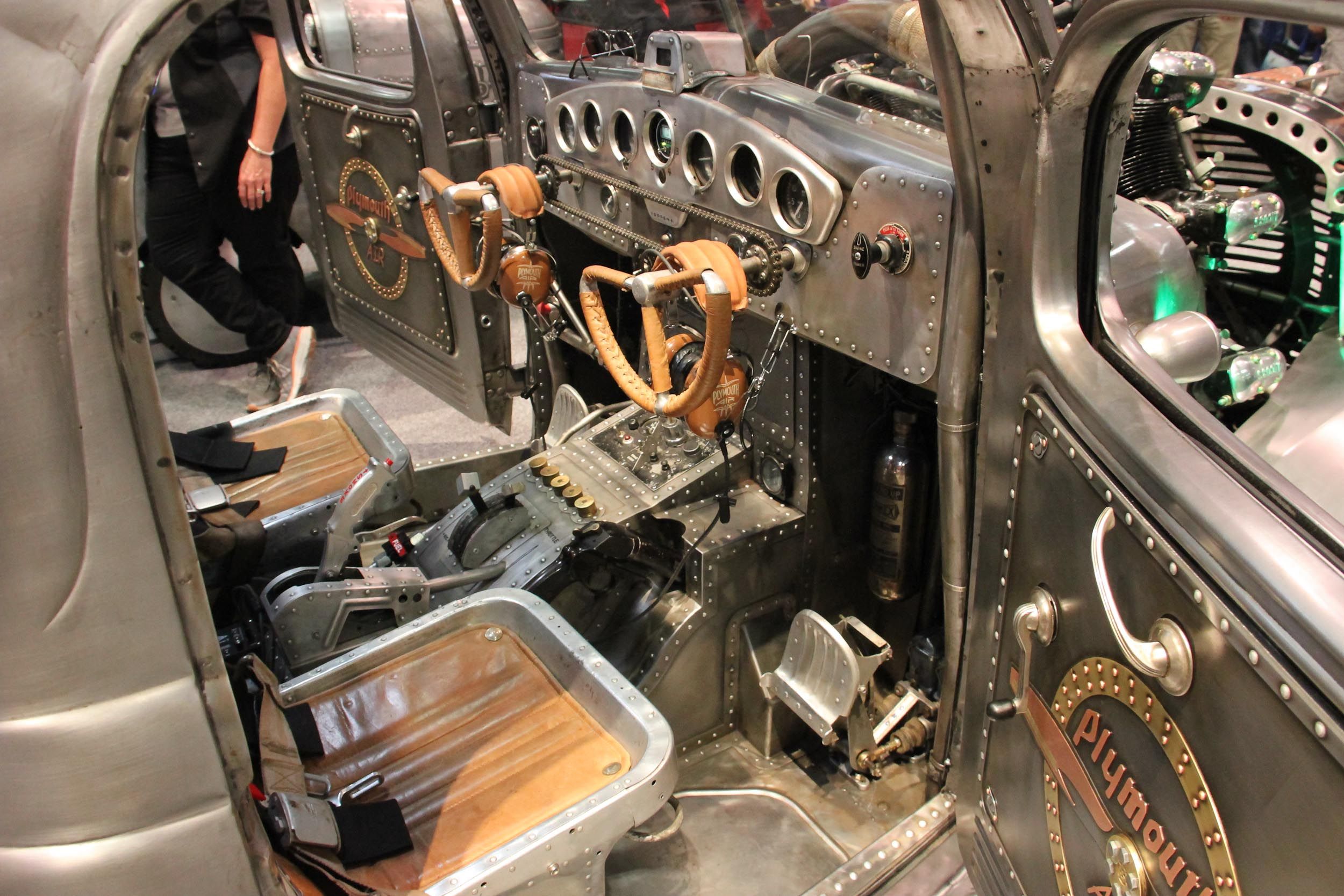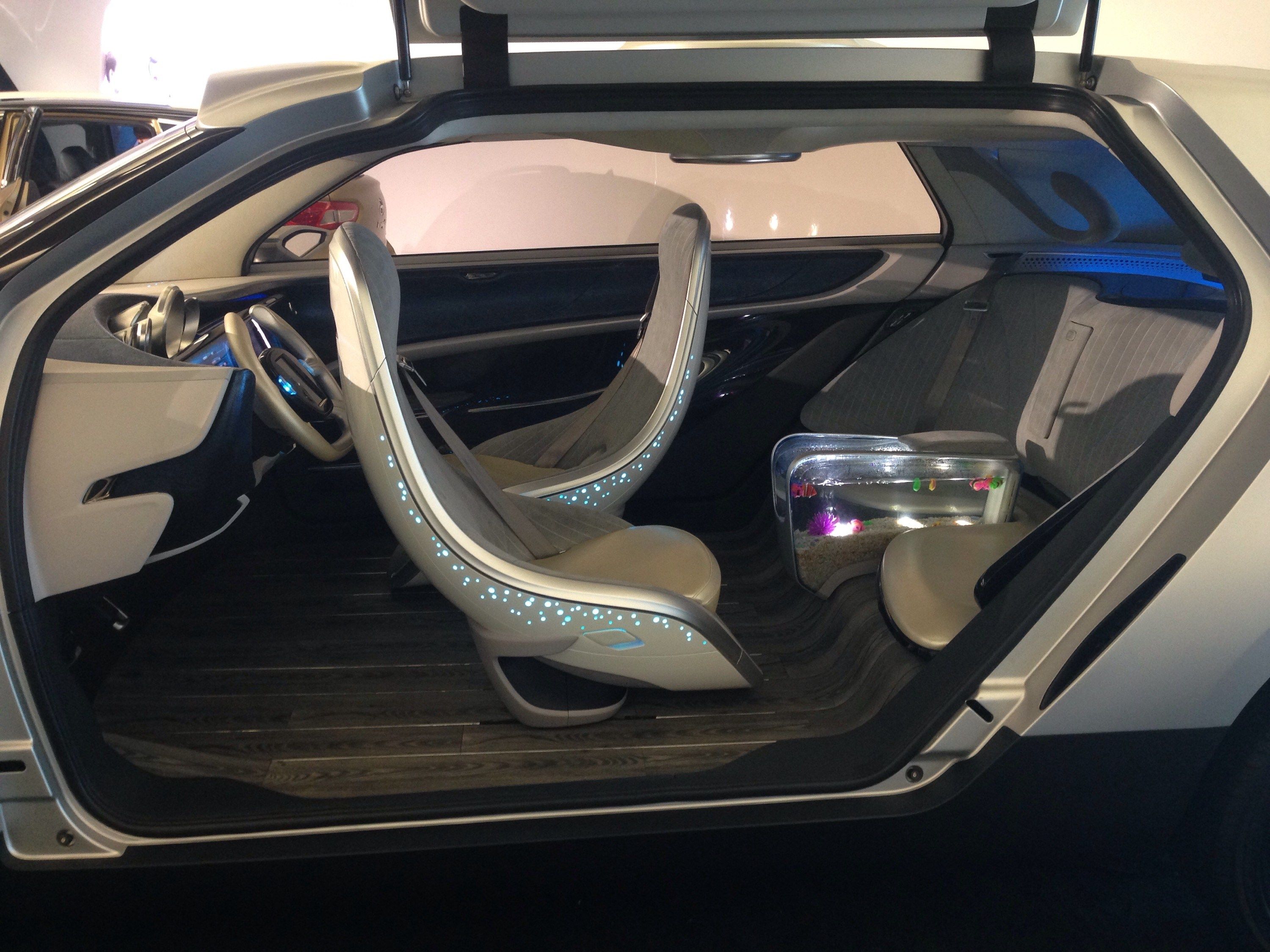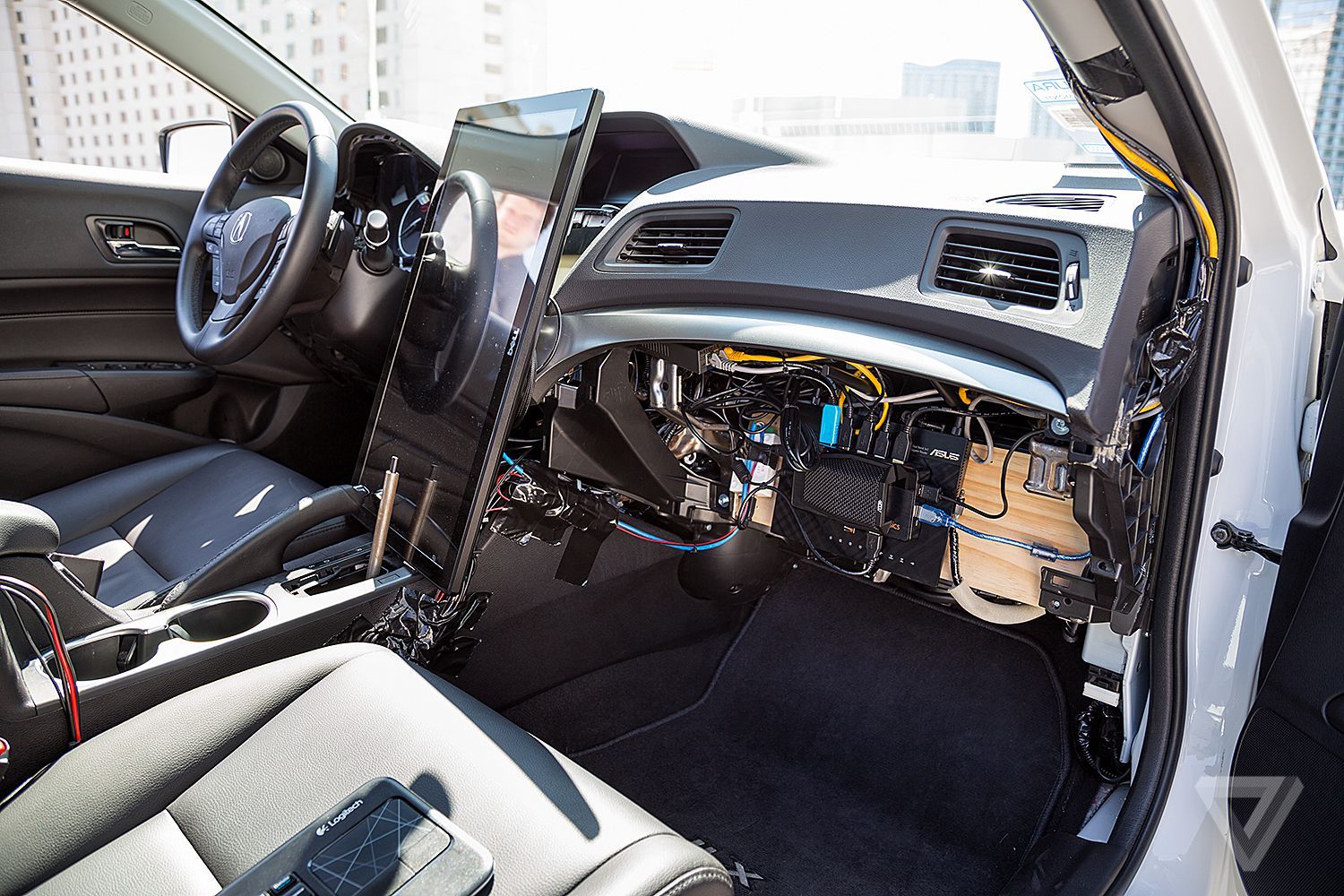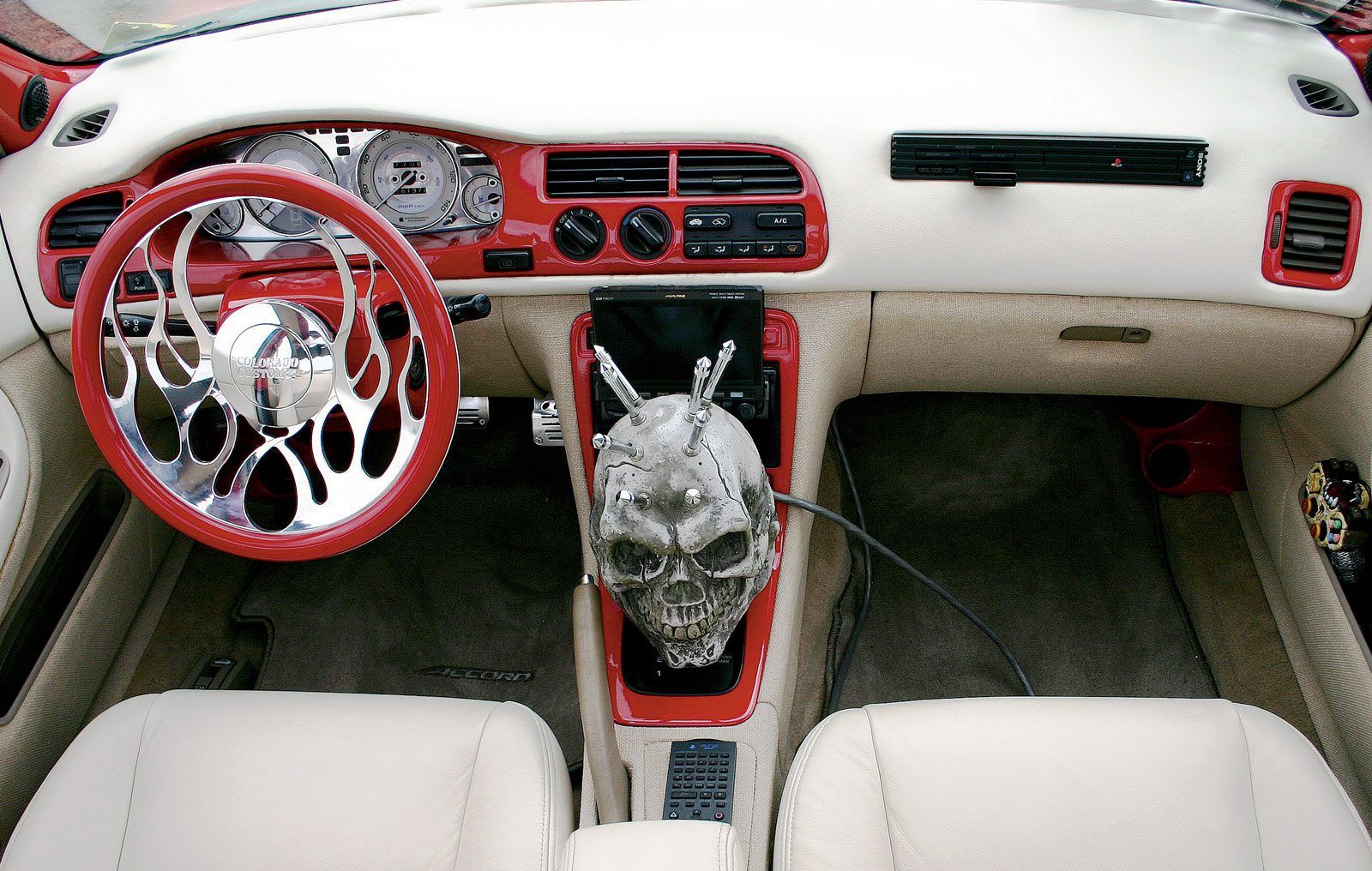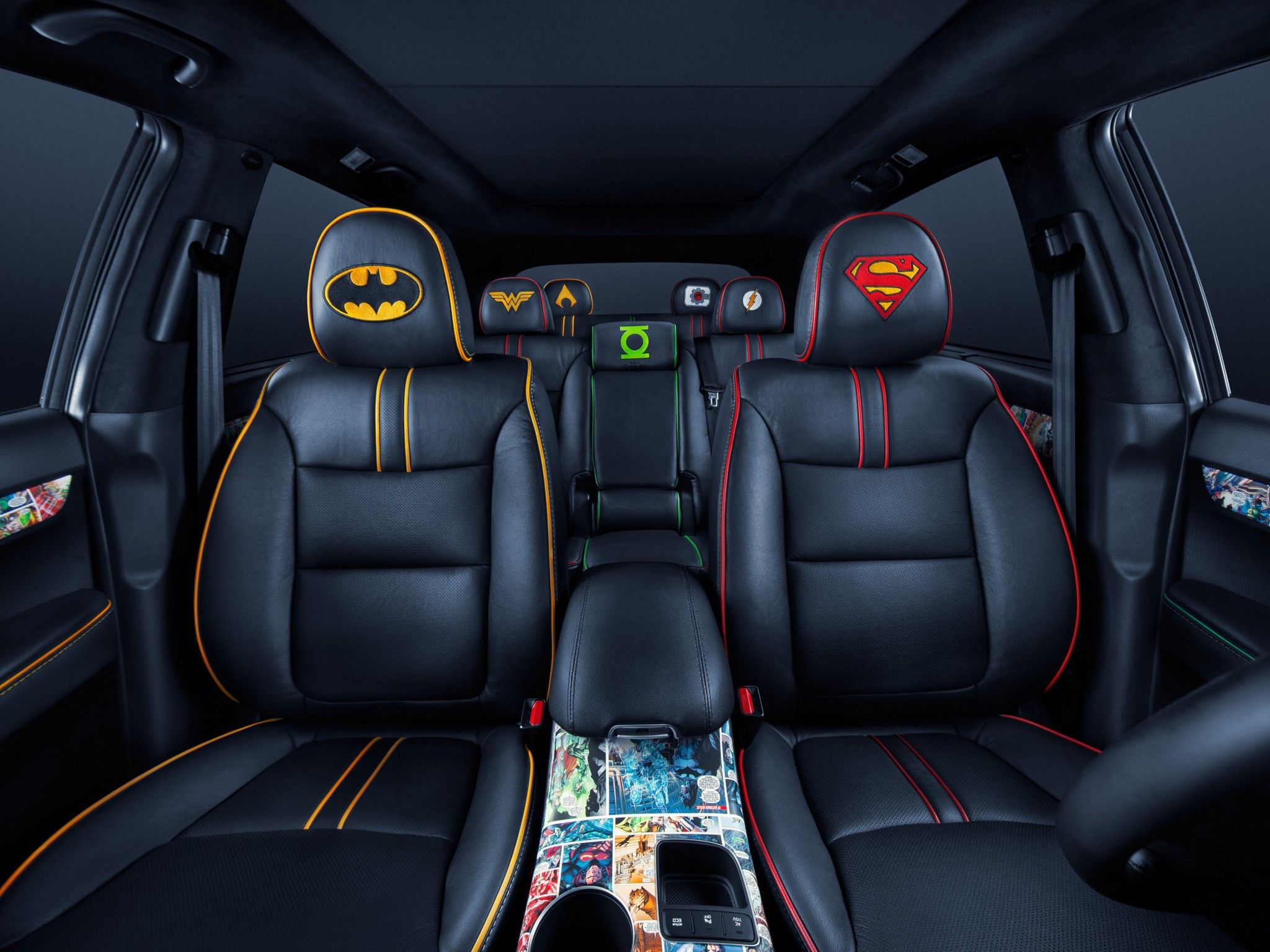People can spend a lot of time in their cars. It's all well and good to customize the outside for those that see your car driving by or looking good in your driveway, but the majority of your time is spent inside the car. That's where the real personalizing takes place. Whether it's creature comforts or a signature style, the modifications that an owner puts in his or her car says more about the driver than all the wraps, fender flares and LEDs ever will. To find out what kind of driver someone is, look inside their car, not outside of it.
Not all modifications are equal, though, and not all of them make sense. They may be excessive, they may be strange, and they may disregard the fact that the primary function of the interior of the car is to control a car driving down the street. Sometimes, they're an attempt to add function, to make a car useful in a second or third way that doesn't really work or worse, makes a car bad at both jobs. It doesn't always matter; not everyone's goals are the same. Not all drivers favor function and comfort over form. Sometimes, practicality isn't the point.
Either way, some interior modifications can leave casual observers scratching their heads wondering what the thought process was or what goal the owner was trying to achieve. Here, we provide a few examples of some wild interior modifications and try and see if we can glean the intent.
25 Sleeper Honda
In automotive parlance, "sleeper" is a term reserved for cars that hide their performance bona fides. It's the kind of car you can sneak up to the light with and suddenly embarrass the rumbling muscle car that's all exhaust note and tires. For this Honda owner, the term is much more literal.
Sleeping in cars has become a more and more common practice in high-rent areas along the coast as young people and entry-level workers struggle to find a way to live and work against higher prices.
For this Honda owner, the fold-down rear seats have been converted to a bed, making the compact car double as a rather crowded camper.
24 USAF Mustang
From World War II to the mid-sixties, the name "Mustang" conjured images of the sky-dominating US fighter plane that helped the allies win the war in the most quintessentially US-like way. It was a big engine with big guns in a light plane that overpowered the opposition.
When Ford went about inventing the pony car, they followed that formula and took the name "Mustang." In 2015, Mustang leaned into its aircraft cousin with a fighter-plane-inspired interior. In 2009, the USAF went to Galpin Auto Sports of Pimp My Ride fame to give a Mustang a jet-fighter interior as a recruitment tool. One assumes the ejector seat is for show only.
23 Spongebob Sienna
There's a relatively common movie promotion technique that tells you that at least some studio executives are gear-heads at heart. For big-budget high-profile films, it's increasingly common for the studio to commission a custom car to do the car show and convention circuit to promote the movie. Sometimes, that makes sense, like Lexus's tie-in with Marvel's Black Panther that features little more than a colorful wrap and nice details. Then there are things like this, the SpongeBob SquarePants Toyota Sienna.
Featured at the 2014 LA Auto Show to promote the Spongebob Squarepants movie, it has features like a thigh-jabbing nautical steering wheel and a fish tank.
Granted, it's hard to get excited about a minivan, so one has to go to the extremes.
22 Video Game Honda
Since the release of Gran Turismo for the first PlayStation, racing simulators and car culture have gone hand-in-hand. As young kids that fostered their love for tuning cars on their home video game systems grow up to have cars of their own, they take that video game love to their automobiles.
This well-detailed 'there's no such thing as too much' Honda design allows taking the racing sim games on the road in the very car that the games simulate. When you get tired of the real thing, you can pull over in your car and pretend you're driving a real car.
21 Flower Power
It's not just movies that get the custom car promotion treatment.
Bloomberg spotted this custom Toyota created by the Toyota Technical College in Tokyo to promote the 2020 Tokyo Olympics.
It's a mash of a celebration of both sport and games with the cup and ball shifter, the fireworks ceiling, and Japanese culture with the kimono design seat covers. While the interior design is busy, it has nothing on the roof that features a replica of a Japanese castle on the roof.
20 Pirate Van
Every decade has its favorite custom. The fifties had stripped-down hot rods, the sixties had fire-breathing muscle cars, and in the seventies, the custom van ruled the day. For the custom van, excess was the name of the game. Many of these rolling art pieces featured themes, often with a fantasy theme or a lounge feel.
This van owner has decided to lean into the pirate theme hard. The captain's chair has been given over to a pirate captain skeleton, and there's even a stuffed monkey cage. We also see a return of the thigh-bruising nautical wheel, though at least, this time, some clearance for the legs was given some consideration.
19 Record Player
Sometimes, it's hard to remember that the radio developed alongside the car. These days, it's hard to imagine the car without the radio, but in the early days of both cars and radios, marrying the two was a bit of a rough road. Not long after the radio became a staple of the automobile, finding ways to take your music on the road with you became the next hurdle.
Before the venerable audio cassette, some manufacturers and aftermarket suppliers experimented with the record player.
The problems are as frustrating as they are obvious. This one plays singles, meaning that you have to switch records after every song. The damage from skipping needles and the hot interiors only compounds the issues.
18 Maxed Mini
This exercise in excess was an Alpine design study that won awards in 2004. Built on a stock 2003 Mini Cooper S, this speedster design is a kitchen sink of Alpine product offerings. Six different screens surround the center-mounted driver who actually sits out the back of the car with two twelve-inch speakers behind the solo seat.
In this case, interior is exterior, as this speedster design has no roof and only a minimal windshield. The butterfly steering wheel is a cool-looking touch, but outside of a race car, it's a difficult way to steer.
17 Conspicuous Consumption
For some car buyers, the car is less a symbol of freedom or driving pleasure and more of a demonstration of their wealth. Certain brands lend themselves to this kind of display more than others, and while they remain engineering marvels and monuments to speed, the exclusive cars end up in polished garages as showpieces. For this already exclusive Mercedes-Benz SLR hypercar, the exclusiveness game has been dialed up.
Jalopnik reports that owner Ueli Anliker added touches like a ruby encrusted badge to put the value of the car at close to $4.3 million.
As a result, the McLaren-engineered performance takes a backseat.
16 Art and the Automobile
Art and the car go hand in hand. Art cars are a staple of car shows and artist festivals across the world. It's not only garage artists decorating junk cars that marry the disciplines of automotive design and artistic representation.
The Jaguar E-Type has famously been featured in art galleries for its eye-catching design, and modern artists have taken to the automobile as a canvas for their work. BMW even periodically commissions a modern artist to design their race cars. Here, photographer Luis Gispert juxtaposes couture branding and a sparse setting by decorating a truck interior with Louis Vuitton in an empty snow-covered field.
15 Riveting
Aircraft-inspired design is, of course, not a new or uncommon thing. Car culture has borrowed from airplane designs from the World War II era all the way to the jet age and Lamborghini's 'stealth fighter' angular looks.
This custom has taken the riveted panel look to the interior to create a clean and barren look evocative of the rivet plate look of airplanes of the '30s and '40s.
The aesthetic continues on to the diamond-pressed metal dashboard. It's a clean and professional custom job that looks good statically, but it's hard to imagine being a useful or comfortable drive.
14 Katana Shifter
The shifter is a common target for personalizing a car. Ed "Big Daddy" Roth became known for drawing exaggerated tall shift nobs most often associated with his "Rat Fink" hot rod cartoon designs.
Custom shift nobs get their own aisle in almost every car parts store one could walk into. For some, though, a simple eight ball or dimpled knob isn't enough to set their car apart, like with this otherwise mundane car interior that features the hilt of a samurai sword as a shift knob. While it might give the driver the feeling of a "Wandering Ronin", it's not the most ergonomic way to work your way through the gears.
13 All-Glow Interior
Customizing is as subject to trends as much as anything else. One of the biggest trends of the moment is neon highlights. Though of varying legality depending on where you live and the colors chosen, the most popular is LED lights under the chassis to give the car an unreal glow as it drives down dark streets.
Interior lighting is generally reserved for foot-wells and aftermarket stereo systems. "Reserved" is not likely in this builder's vocabulary. With this much light in the interior, it has to be hard to see the road at night.
12 Fax Machine
Once upon a time, before phones fit in our pockets and gave us the opportunity to crush candy while waiting in line, the car phone was sold on the promise of productivity.
The young urban professionals of the 1980s were on the go and didn't want to stop making deals just because they were on the road.
This lean towards on-the-road productivity reached its apex with the invention of the car fax machine. It even played a key role in the movie The Player. These days, the fax machine, as well as the idea of driving and working, have faded into memory.
11 Nudie Bonneville
Nudie Cohn was a Hollywood tailor who popularized the rhinestone look for urban cowboys in the '60s and '70s. Nudie Cohn wasn't satisfied confining his flair for excess to rhinestone-studded cowboy suits for celebrities; he also made some of the wildest custom cars for celebrity clients.
An example is this Bonneville complete with a full-size coin-embedded saddle over the center console and a six-shooter over the glove box. Originally built for display in his shop a few blocks from where I'm writing this, it was eventually bought by Roy Rogers. In 2015, Sotheby's sold it for $308,000.
10 Radial Pickup
The post-war hot rod was defined by teenagers buying pre-war 'jalopies' and putting big modern engines inside them. Before the war, if builders wanted big engine power, they looked at large airplane engines. The Corn family of Englewood, Colorado brought together their love of both planes and cars by taking a 1939 Plymouth off their family scrap yard and shoving a radial airplane engine in it.
They kept to the aero theme by making the interior out like the cockpit of a World War II-era bomber cockpit.
Complete with chain-joined dual controls, it's a "backseat driver's" wildest dream.
9 Fish Tank
There's a concept created by culture critics about the point when an idea has reached its peak and goes downhill from there. The example they give is the famously ridiculous episode of the show Happy Days when greaser character Fonzie is manipulated into jumping over a shark pen on a pair of water skis, giving the concept the name "jumping the shark."
For custom design, the stand-in for "jumping the shark" might well be "adding a fish tank." Custom design always seems to reach its peak when someone decides, "let's put a fish tank in it."
8 The $1,000 Self-Driving Car
The car itself largely started in people's garages. After Carl Benz successfully put an internal combustion engine in a carriage, tinkerers across the globe started making their own homemade cars before manufacturers started making cars you could buy ready-made. This do-it-yourself spirit hasn't died. As companies from Tesla to Google test out self-driving cars, George Hotz set out to beat the big guys to the punch.
He tried to do so by developing a self-driving system that can be added to existing cars, like this test-mule 2016 Acura ILX.
While Hotz hasn't delivered on his promise to deliver video of his car crossing the Golden Gate bridge on its own, he remains committed to delivering an aftermarket self-driving car system.
7 Skull Consul
Skulls are a custom-car staple. On chopped hot rods and rat rods, it's not uncommon to see a skull atop the shift nob or on the hood of a matte-colored custom. They're a symbol of defying death, of embracing the dark side, of separating the mean and dark custom from the normal and sedate commuter world.
In the plastic and vinyl world of a modern car, it looks less like an act of rebellion and more like the owner's moody 14-year-old left his heavy metal decoration in the family cruiser. The flame-themed steering wheel doesn't do enough to make the skull feel at home.
6 Justice League Minivan
At the movie theaters, DC comics has struggled to catch up to the Disney-owned Marvel juggernaut comic-book-inspired movies. While still a financial success, last year's Justice League movie failed to penetrate like The Avengers movies that dominate both the box office and popular culture.
While intended as a tribute to the legendary first superhero team, putting the venerable Justice League in the most pedestrian of all vehicles, the minivan, seems almost symbolic of where DC stands in live-action movies.


